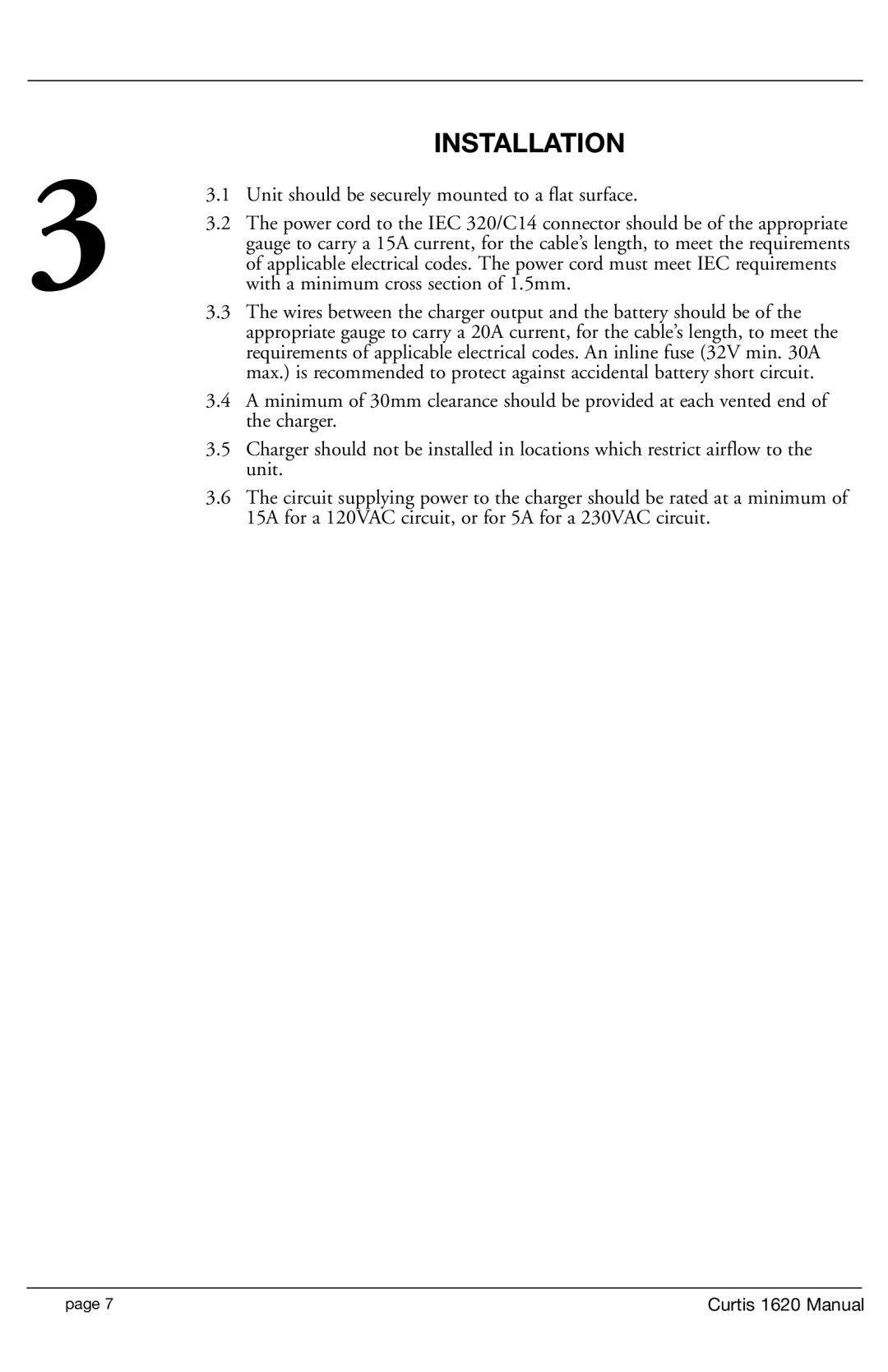
3 |
| INSTALLATION |
3.1 | Unit should be securely mounted to a flat surface. | |
3.2 | The power cord to the IEC 320/C14 connector should be of the appropriate | |
| gauge to carry a 15A current, for the cable’s length, to meet the requirements | |
| of applicable electrical codes. The power cord must meet IEC requirements | |
| with a minimum cross section of 1.5mm. | |
3.3 | The wires between the charger output and the battery should be of the | |
|
| appropriate gauge to carry a 20A current, for the cable’s length, to meet the |
|
| requirements of applicable electrical codes. An inline fuse (32V min. 30A |
|
| max.) is recommended to protect against accidental battery short circuit. |
| 3.4 | A minimum of 30mm clearance should be provided at each vented end of |
|
| the charger. |
| 3.5 | Charger should not be installed in locations which restrict airflow to the |
|
| unit. |
| 3.6 | The circuit supplying power to the charger should be rated at a minimum of |
|
| 15A for a 120VAC circuit, or for 5A for a 230VAC circuit. |
page 17 | Curtis 1620 Manual |
